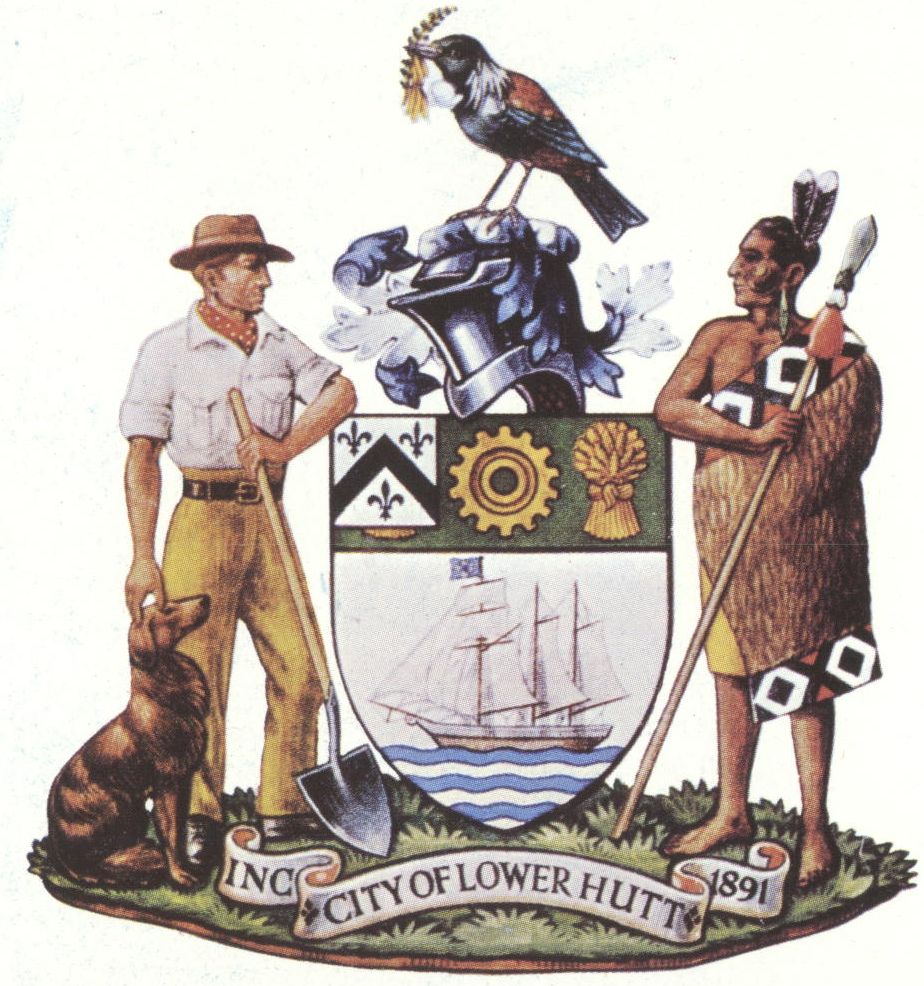Lower Hutt: Difference between revisions
Jump to navigation
Jump to search
Knorrepoes (talk | contribs) m (Text replace - "'''Origin/meaning :'''<br/> " to "====Origin/meaning====") |
Knorrepoes (talk | contribs) m (Text replace - "====Origin/meaning====The" to "====Origin/meaning==== The") |
||
| Line 14: | Line 14: | ||
====Origin/meaning====The ship represents the coming of the early settlers to the Hutt Valley. The garbs of wheat denote agriculture as the first occupation carried on in the area now occupied by the City, and the cogwheel represents present day industrial growth. On the Chief is superimposed a canton with the arms of Sir William Hutt, K.C.B. (1801-1882), a Member of Parliament in England and a Director of the New Zealand Company, from whom the Cry takes its name. | ====Origin/meaning==== | ||
The ship represents the coming of the early settlers to the Hutt Valley. The garbs of wheat denote agriculture as the first occupation carried on in the area now occupied by the City, and the cogwheel represents present day industrial growth. On the Chief is superimposed a canton with the arms of Sir William Hutt, K.C.B. (1801-1882), a Member of Parliament in England and a Director of the New Zealand Company, from whom the Cry takes its name. | |||
[[Literature]] : Information obtained from Lawrence Jones | [[Literature]] : Information obtained from Lawrence Jones | ||
[[Category:New Zealand]] | [[Category:New Zealand]] | ||
Revision as of 15:30, 20 November 2012
| Heraldry of the World Civic heraldry of New Zealand |
LOWER HUTT
Region: Wellington
Additions : 1989 Wainuiomata District Council, Petone Borough Council, Eastbourne Borough Council
Origin/meaning
The ship represents the coming of the early settlers to the Hutt Valley. The garbs of wheat denote agriculture as the first occupation carried on in the area now occupied by the City, and the cogwheel represents present day industrial growth. On the Chief is superimposed a canton with the arms of Sir William Hutt, K.C.B. (1801-1882), a Member of Parliament in England and a Director of the New Zealand Company, from whom the Cry takes its name.
Literature : Information obtained from Lawrence Jones

